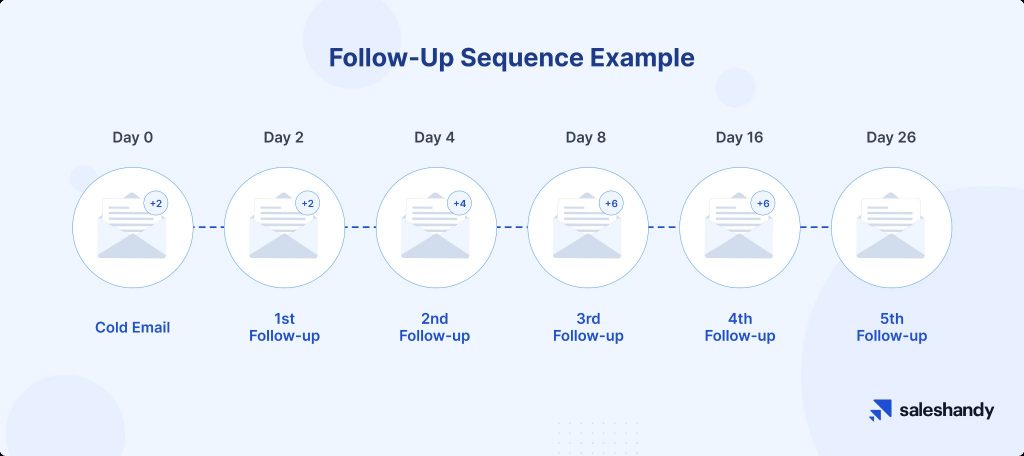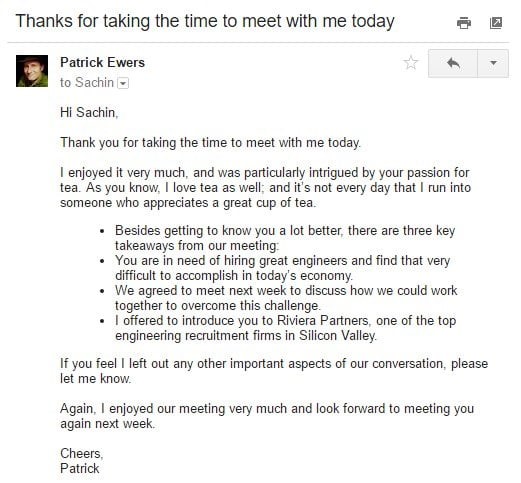The use of follow-up emails is a stealthy weapon. Despite this, over half of sales representatives do not engage in any kind of follow-up. You will be rewarded for your efforts if you do so. When sales representatives check up with customers regularly, they improve their connections with those customers, which in turn helps them complete more transactions and advance their careers within the firm. When you send a message to someone and don’t hear back, it’s common practice to “circle back” or “just check in” to see how things are going.
However, because you do not have a tried-and-true format for the follow-up email, you pause before writing. What more can you mention to encourage a response from your potential customers? In the following paragraphs, you will find some samples that you can immediately copy and paste into your outreach efforts. In the next section, you will find real-life instances, responses, and response rates, as well as instructions, to effectively send a follow-up email.
Timing Your Follow-Ups Correctly
Timing is everything when it comes to sending a follow-up email. If you wait for too much after the first contact, your customers may forget what you’re all about. You might come out as aggressive if you waste no time getting started. Your prospects of increased engagement will be ruined and your follow-up email will be useless if the time is off either way. Unless you are following up with someone who has recently subscribed to your list, we suggest waiting about a week before delivering a marketing follow-up email. In such a situation, it’s important to respond quickly to their membership confirmation email.
You can find the best time to follow up with your target audience by doing a simple divided test. If you want to learn how to follow up on an email, try to divide your members into subsets to see how alternative timings of the identical follow-up email perform. Try starting with a week and cutting down if required to determine the optimal length of time. If you lengthen the time, however, consumers may dismiss your first content, thus your results may differ.
Application For a Consultation
There is a good probability that you will write a follow-up email in order to seek another conference or talk with the recipient. This might be because you want to scratch their mind, propose a business idea, seek assistance, or obtain criticism. You need to include specifics in your email regarding what you want to talk about in the meeting, as well as the reasons why the receiver will benefit from the gathering and the topics that will be discussed.
You may make things even easier for the person who is receiving your message by including a link to a piece of free application that enables them to method is implemented on your schedule using their own time.
Think About Originality
Truth be told, there are a plethora of follow-up emails that even the best essay writers and other professionals make daily. Consequently, you should aim to be as original as possible so you can stand out from the crowd. Follow-up emails indeed maintain a fairly standard pattern and format.
However, this does not exclude you from being real in the conversation you have. Avoid using messaging that is vague and meaningless. Think about the precise thing you wish to convey to them so that it will stimulate their recollection. And unless you can get away with it, try to maintain a social style wherever you can. This makes it simpler to execute commands, and the individual won’t feel compelled to respond with an overly official tone because of it.
Do not recreate the email or force the receiver to look for the prior message if you are responding to an email that you have already sent. It is best to respond to all recipients of your message and then delete yourself from the register of recipients so that the other person may possess all of the necessary information.
Add Quality
It’s not a secret that every email follow-up should have quality. You shouldn’t ever deliver it without first raising the stakes and proving your value to the recipient. Avoid sending follow-ups that are only “coming into contact base” or “starting to catch up,” since they don’t contribute anything to the conversation other than adding another email to the recipient’s inbox. Always bring something of value to the table. Give them a reason to open, click, and reply to your message by making it worthwhile.
By providing them with something of value, whether in the form of a relevant tangible item that is mailed to them or a webcast, case analysis, pattern, or other internet materials, you open the door to possibilities for spontaneous, natural connection and follow-ups. You should have no trouble obtaining a variety of them in connection with these significant offerings. Ensure that it is of good quality and is relevant to the receiver. You should strive to be perceived as something of value to them. There is virtually no motivation to approach them, and even less motive for them to reply or care about what you have to say if you are not delivering some kind of added value in any form.
A Few Examples of Follow-Up Emails
Now that you know what writing follow-up email requires, it’s time to check out an example. In the end, you can learn the best through it. So, let’s see it down below.
- [First Name].
I refuse to give up on this. Please don’t skip out on meeting [Name of Expert].
To demonstrate [Your Subject / Product / Advantages], he or she will share their display with you. Several of our most prominent clients, including [Three Past Clients], have enlisted the services of [Professional Name]. Your opportunity to secure a half-hour slot in their schedule has arrived.
Unlike a webinar, this is not an online presentation. Indeed, there is no cost involved. Simply put, we adore you and want to show it. There are few spaces available. You may schedule a time [here] (Link to your calendar). Sending [Your Firm] kind regards,
Name Here.
- [Name],
I’m contacting you to thank all the people and to figure out how you’d want to continue the discussion further. Commiserations on the next move, if you’re still engaged. Please get back to me as soon as you can.
[Signature]
Conclusion
Customers still prefer to do business with those they know, like, and trust, and this is true across all demographics, economic sectors, and social strata. Moreover, that comes from those who love them. No matter what kind of follow-up technique or format you choose, you must prove that your offering will be of value to the client and will aid them in reaching their objectives. Those others, rather than you, will benefit most from what you’re doing. Sending a potential follow-up email is a great way to reaffirm your interest in working with them.




